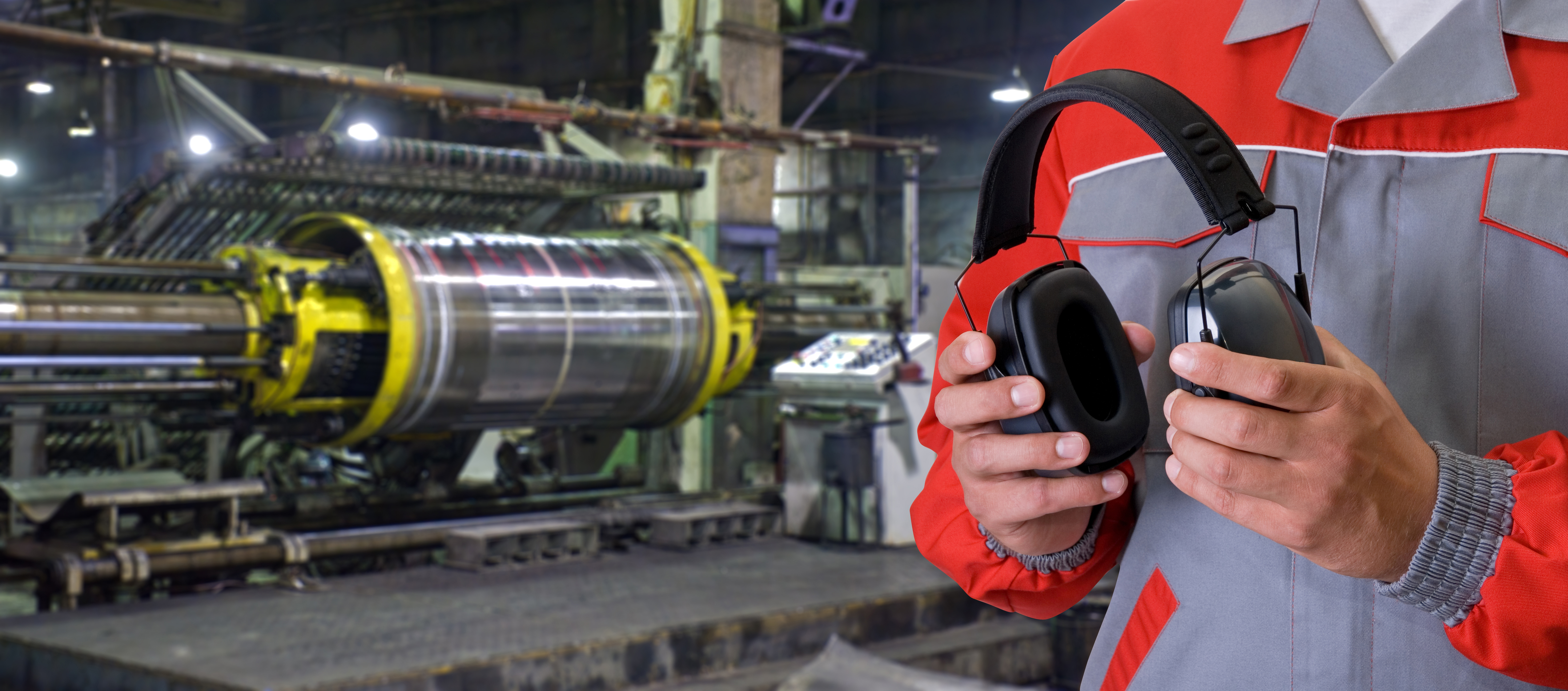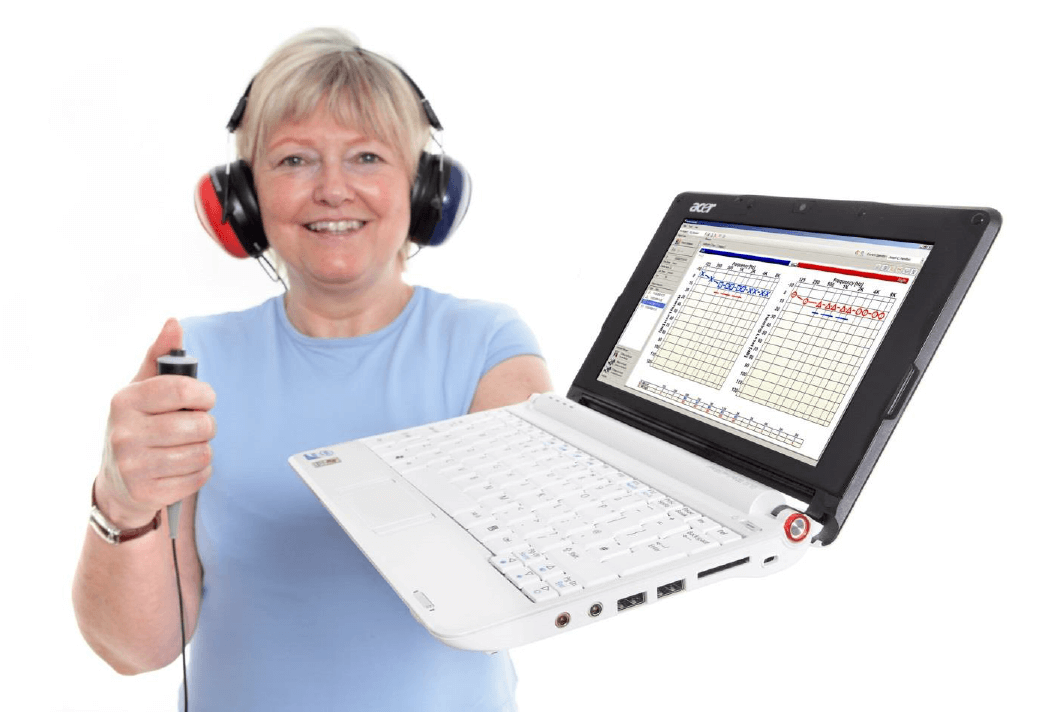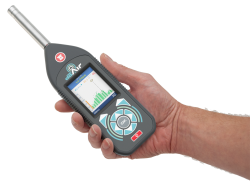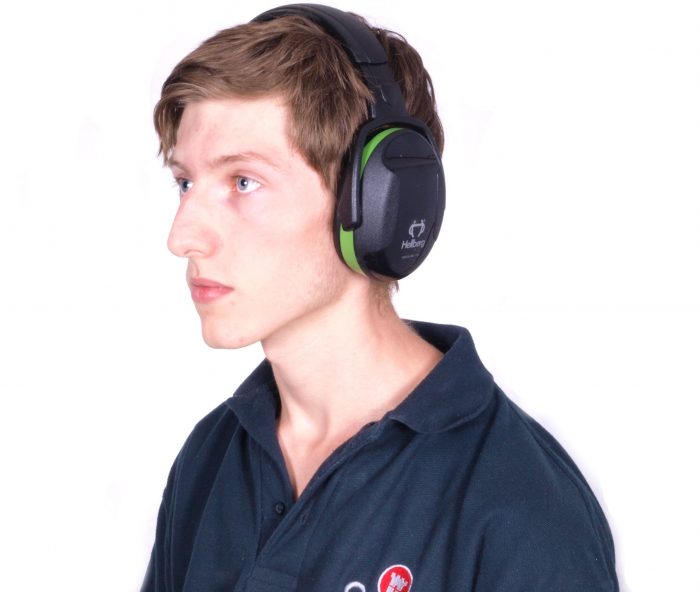What is Noise at Work?
Noise at Work is the term given to the noise levels that employees are exposed to at work, and is centred around their safety and protection.
In the UK, the Health and Safety Executive enforces a set of regulations that all UK businesses should comply with, these are named The Control of Noise at Work Regulations 2005. Simply, the main aim of the regulations is to ensure that employees are protected from excessive noise exposure to prevent hearing loss and damage.
Please note – this guide is not an alternative to a formal training course

Risks Associated with Industrial Noise in the Workplace
When noise exposure in the workplace isn’t managed, both the employer and employee’s face different types of risks.
The Employer |
The Employee |
| Industrial deafness claims | Noise induced hearing loss (NIHL) |
| HSE fines | Inability to hear certain frequencies |
| HSE interventions | Temporary/Permanent Threshold Shift |
| Poor media publicity | Tinnitus |
Health surveillance and audiometric tests
The importance of providing health surveillance and hearing tests goes without saying, but implementing a hearing conservation programme without breaking the bank is another challenge in itself.
The process of putting together a whole assessment programme is for another day and another report, but suffice to say that you need it and you need full access to all of the test results, so beware of any external body which tries to say you can’t have them.

There is only one purpose to the majority of health surveillance and that is to establish a baseline as early in someone’s employment as possible and then to compare against that baseline periodically thereafter. This might be bi-annually, annually or even sooner if required.
- Establish a baseline at start of employment
- Perform periodic comparisons to that baseline thereafter, bi-annually, annually or even sooner if required
There is a tendency in many businesses to consider health surveillance as a medical process, and in some instances there may be a slightly medical element to parts of the testing, but it will help you to remember that the process as a whole is not medical. This type of health surveillance is non-medical for the following reasons:
- Audiometric testing doesn’t have to be conducted by a medically qualified person
- There’s nothing diagnostic about the testing
- Whilst results of the tests are of a personal nature, there’s not quite the same medical in confidence barriers, so as an employer you are allowed access to the results
Audiometric Testing
When you’re looking at noise exposure and Noise Induced Hearing Loss (NIHL), The Control of Noise at Work Regulations 2005 state that you should conduct ‘appropriate’ health surveillance on anyone who is at risk. In the guidance provided by the HSE, it’s recommended that health surveillance should be performed on anyone who is exposed to above the Upper Action Value of 85dBA Lep’d (see later for an explanation of Lep’d).
Appropriate health surveillance for noise is known as Industrial Screening Audiometry, which is the practice of running audiometric testing programmes within industry. This could normally include periodical basic otoscopic examinations, hearing tests using an audiometer, recording findings and making recommendations if necessary.
You will probably have a questionnaire each year to go with the testing as with all health surveillance, but a hearing check should always be a part of the process.
You can find out which members of your workforce should have hearing tests and learn the easiest ways to start implementing a conservation programme in your business by reading Who should have hearing tests and the easiest way to get started with audiometry.
Setting out your risk assessment
The rst essential step of a noise risk assessment it to start by making observations. This forms the basis of the HSE guidance and will lead the rest of your assessment. Following this you will then be in a position to decide upon the next steps and what will be needed. The following should be considered during your Risk Assessment:
- Who’s checks show early signs of Noise Induced Hearing Loss (NIHL)?
- Where are the potentially noisy areas in the workplace?
- Who is working in them or visiting, and for how long?
- Do you have to shout in those areas to be heard?
- Is there any potentially noisy mobile plant being used by employees?
- Is any ear protection in use, by whom and what is it?
Read Six Things You Need to Consider During Your Noise at Work Risk Assessments and ensure your risk assessments are accurate.
Measurement and Instrumentation
One of the first things to understand is that it’s entirely possible that you might not have to actually take any measurements at all. The truth is, if you can be confident there’s no discernible noise in your workplace, then so long as you say so in your risk assessment, you’ve covered yourself. Unfortunately it’s not that simple for most businesses. Read Do I Need to Measure Noise Levels at Work for a more detailed look into whether you need to take measurements.
Unfortunately, in reality it’s not quite that straightforwards. Firstly, although you might feel confident that noise isn’t a problem in your workplace, are you certain there isn’t anything you’ve missed? Workplace noise can vary considerably at different times of the day or week, or as processes change. Secondly, personal injury claims for noise induced hearing loss can pose a threat to any business, and the simple fact here is that if you haven’t taken measurements in your workplace and at least tried to figure out who’s exposed to what, then you have very little chance of successfully defending or mitigating claims.
Choosing a Sound Level Meter or other type of Noise Monitor
In your search for noise measuring equipment you’ll come across a plethora of choice and availability, with prices as low as £50 and up to almost £5,000. This is where having a level of  understanding is important to ensure that you’re not paying over the odds for noise measuring equipment with features that you’ll never need. Within noise at work you are likely to come across Sound Level Meters and Noise Dosemeters, and within those you have choices of Class and different parameters, but we’ll come to that soon.
understanding is important to ensure that you’re not paying over the odds for noise measuring equipment with features that you’ll never need. Within noise at work you are likely to come across Sound Level Meters and Noise Dosemeters, and within those you have choices of Class and different parameters, but we’ll come to that soon.
Noise dosemeters are a type of sound level meter designed to measure the level of noise exposure of a person over a period of time. They are most commonly used for Noise at Work health and safety compliance. To find out more about Noise Dosemeters and to view some of the latest equipment, click here.
Where should you take your measurements during a Noise at Work risk assessment?
When performing your noise measurements as part of your Noise at Work risk assessment, the HSE provide clear guidance on how and where to position the sound meter in relation to the operator’s ear. You can read the guidance on the HSE’s website here (page 89, halfway down) or continue reading.
When using a sound level meter, measurements should be made at the position of the operator’s head, ideally without the operator present. If this isn’t possible because the person needs to operate the equipment, measurements should be taken with the microphone close to the operator’s ear in order to measure a realistic and accurate representation of a normal working day. You should avoid taking measurements closer than 15cm to the operator’s head in order to prevent noise reflections that may affect the readings.
If you’re unsure, it always helps to remember that all you’re trying to do is capture a representative reading of a normal day.
Choosing Suitable Hearing Protectors

Hearing protectors play an important role in the protection of your workforce against noise, but they shouldn’t be your first port of call to reduce noise exposure. Noise control should start at the noise source, and there are often some simple actions you can take to bring the noise level down. Once these actions have been exhausted, protection should be issued.
As an employer or manager you are required to:
- provide and recommend suitable protection if their noise exposure is between the lower (80 dB(A)) and upper action values (85 dB(A))
- make the wearing of suitable protection compulsory to employees who’s noise exposure is above the upper action value (85dB(A))
- provide training and information for your employees on how to wear and maintain protection
- identify areas where protection is mandatory and clearly sign these as hearing protection zones
Choosing suitable hearing protection for your employees will normally require a protection assessment. Your hearing protection assessments are normally part of your noise at work survey and report, whether you are assessing existing protection or the hearing protection already in use.
There are three different methods to assess hearing protection, and the method you use will depend on your type of noise measuring equipment and the features it has. These three methods are:
- SNR – Single Number Rating method
- HML – High, Medium and Low (Frequency) method
- Octave Band – Using Octave Band attenuation data
The Octave Band hearing protection assessment method is the most accurate method of calculating the effect of using a particular protector but Octave Band noise measurements are required.












